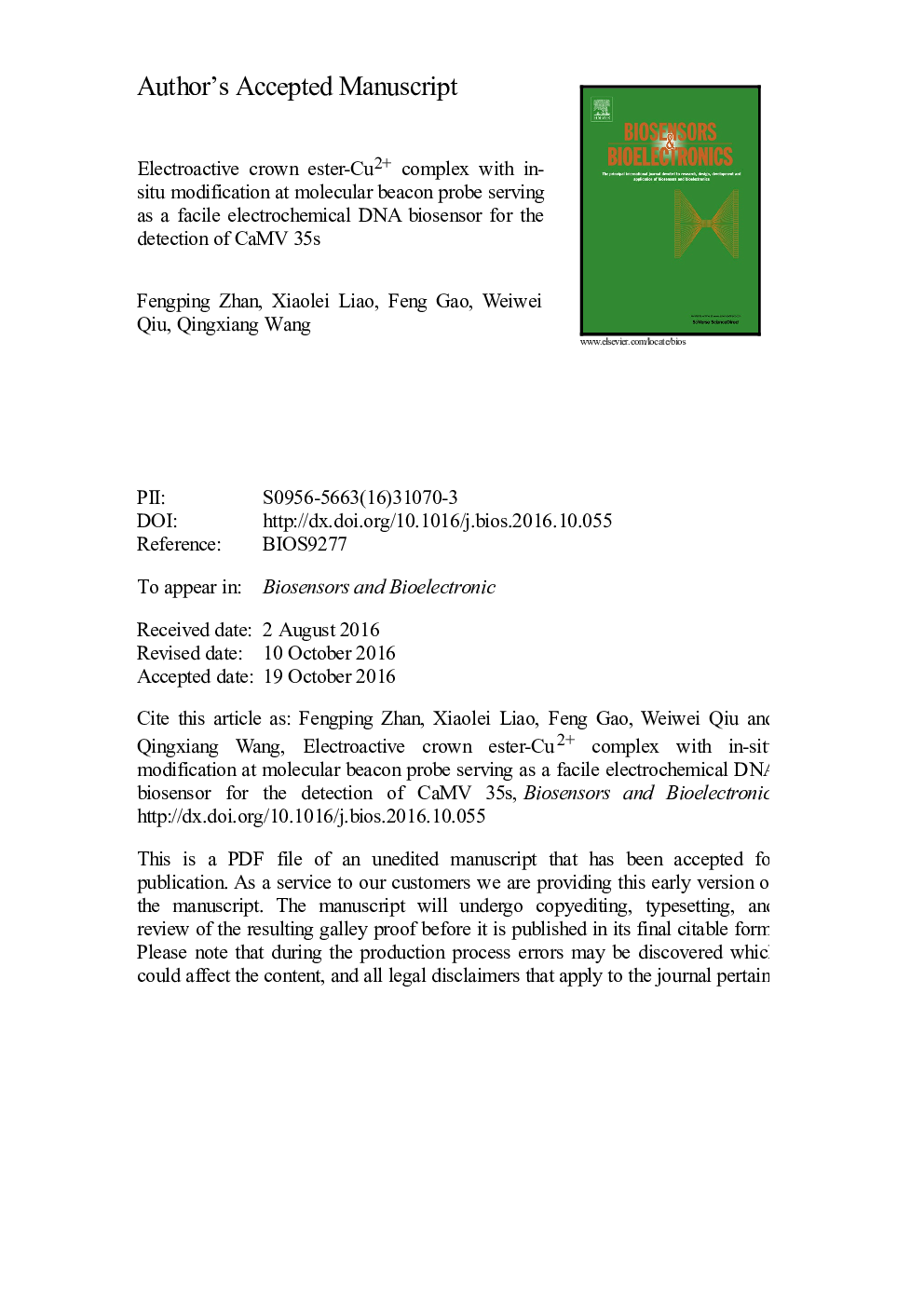| Article ID | Journal | Published Year | Pages | File Type |
|---|---|---|---|---|
| 5031643 | Biosensors and Bioelectronics | 2017 | 23 Pages |
Abstract
A novel electrochemical DNA biosensor has been facilely constructed by in-situ assembly of electroactive 4â²-aminobenzo-18-crown-6-copper(II) complex (AbC-Cu2+) on the free terminal of the hairpin-structured molecule beacon. The 3â²-SH modified molecule beacon probe was first immobilized on the gold electrode (AuE) surface through self-assembly chemistry of Au-S bond. Then the crow ester of AbC was covalently coupled with 5â²-COOH on the molecule beacon, and served as a platform to attach the Cu2+ by coordination with ether bond (-O-) of the crown cycle. Thus, an electroactive molecule beacon-based biosensing interface was constructed. In comparison with conventional methods for preparation of electroactive molecule beacon, the approach presented in this work is much simpler, reagent- and labor-saving. Selectivity study shows that the in-situ fabricated electroactive molecule beacon remains excellent recognition ability of pristine molecule beacon probe to well differentiate various DNA fragments. The target DNA can be quantatively determined over the range from 0.10Â pM to 0.50Â nM. The detection limit of 0.060Â pM was estimated based on signal-to-noise ratio of 3. When the biosensor was applied for the detection cauliflower mosaic virus 35s (CaMV 35s) in soybean extraction samples, satisfactory results are achieved. This work opens a new strategy for facilely fabricating electrochemical sensing interface, which also shows great potential in aptasensor and immurosensor fabrication.
Related Topics
Physical Sciences and Engineering
Chemistry
Analytical Chemistry
Authors
Fengping Zhan, Xiaolei Liao, Feng Gao, Weiwei Qiu, Qingxiang Wang,
